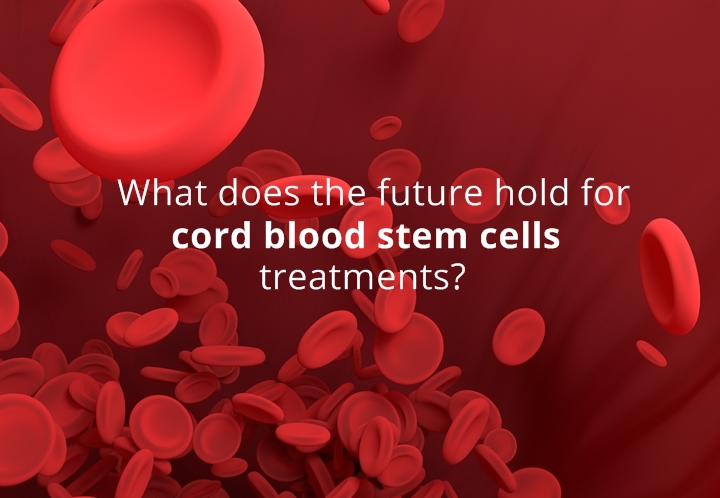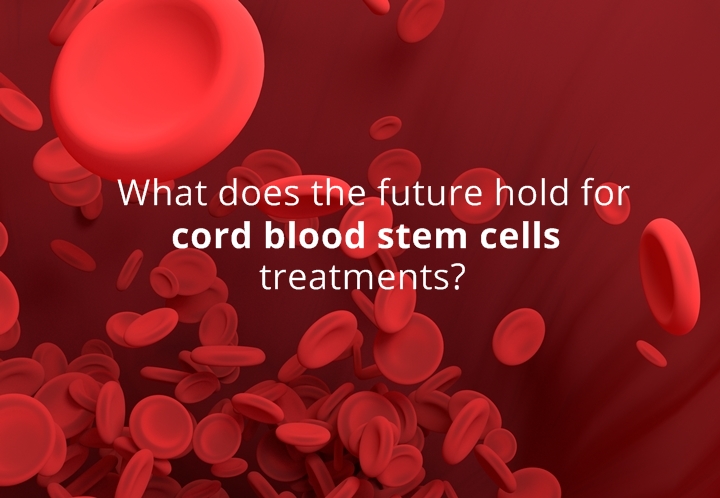
Research into the use of cord blood stem cells continues to move at a rapid pace. There are exciting new discoveries being made on a weekly basis — many of which could completely change how certain conditions are treated. To help you understand the ramifications of these findings, this article will focus on what the future holds for cord blood stem cell treatments.
How are cord blood stem cells currently used?
The therapeutic potential of cord blood was first discovered in 1974, when researchers discovered stem cells and progenitor cells in cord blood. Before this point, the blood left in the umbilical cord after birth was considered biological waste and of little value.
By 1982, researchers were perfecting techniques for preserving cord blood stem cells cryogenically. They were primarily interested in storing the hematopoietic stem cells (HSCs) that cord blood contains.
HSCs are blood cell-producing stem cells, identical to the ones found in bone marrow. They can now be used to treat many different conditions including multiple forms of cancer, metabolic disorders, blood disorders, and immune disorders. By 2017, more than 40,000 umbilical cord blood transplants had taken place, saving the lives of many thousands of people around the world.
Much of the current research into umbilical cord blood stem cells revolves around the use of mesenchymal stem cells (MSCs). MSCs are multipotent stem cells, which have the capacity to change into many other types of cells including osteoblasts (bone cells), myocytes (muscle cells), chondrocytes (cartilage cells) and adipocytes (fat cells).
By harnessing the powerful stem cells found in cord blood, researchers have been able to develop exciting new treatments for many conditions that were previously thought to be incurable.
Read More: The Benefits of Cord Blood Stem Cells from a Newborn Baby
The future of using cord blood stem cell for treatments
Here are just a few of the conditions which may soon be treated with cord blood stem cells.
– Autism Spectrum Disorder
Autism Spectrum Disorder (ASD) is one of the world’s most common developmental disorders. It causes a wide range of symptoms including problems communicating, obsessive traits, difficulty in making eye contact, and learning disorders.
Researchers suspect that some cases of ASD are caused by a disorder of the immune system. Multiple studies have confirmed that some children with autism do have elevated markers in their blood which indicates an over-active immune response.
It has been theorised that cord blood stem cells may be used to reduce autism symptoms by reducing inflammation in the body and secreting factors that repair the immune system. A phase II clinical trial is currently underway to test the efficacy and safety of using cord blood stem cells to treat autism in children. If successful, we may see a stem cell treatment for autism in the next five years.
Read More: Potential Treatment of Autism in Children Using Cord Blood Stem Cells
– Multiple sclerosis
Multiple Sclerosis (MS) is a neurological disorder that affects millions of people around the world. It occurs when the immune system mistakenly attacks nerve cells and eats away at their protective coating. This disrupts communication between the brain and the body, causing pain, impaired coordination, visions loss and many other symptoms.
Researchers believe that cord blood stem cells may be able to treat MS. They believe that the MSCs contained within cord blood may be able to form new neurones to replace the ones damaged by the immune system. HSCs obtained from cord blood may also be able to reset the immune system, so it does not attack the nerve cells any more. Both approaches are currently being tested in clinical trials.
Read More: Progress in Stem Cell Transplant for Multiple Sclerosis
– Rheumatoid Arthritis
Rheumatoid Arthritis (RA) is a debilitating condition that is fairly common in older people. It is a chronic inflammatory disease where the immune system attacks its own tissue. RA primarily affects the joints, resulting in pain, swelling, joint deformity, and limited mobility.
Several studies have found that Rheumatoid Arthritis may be treatable with umbilical cord blood stem cells. One recent study used a single transplant of cord blood-derived MSCs and found that RA symptoms were greatly reduced within 4 weeks. In the future, RA might be treated with a simple injection of stem cells.
– Heart disease
Heart disease remains the leading cause of death for both men and women. However, stem cells may soon be used to improve the condition of the heart and the rest of the cardiovascular system.
Several studies have found that umbilical cord stem cells are very effective at reducing inflammation, which helps the heart heal. Other studies are using stem cells to create cardiomyocytes (heart stem cells), which can then be transplanted into the heart to repair damaged tissue.
Read More: Stem Cell Research to Regrow Heart Muscle Tissue after a Heart Attack
– Type 1 Diabetes
Type 1 Diabetes is another common disease that is responsible for over a million deaths each year. While scientists are still trying to learn the precise cause of type 1 diabetes, they suspect the immune system plays a role. They believe that the immune system mistakenly attacks the body’s pancreatic beta cells, which are responsible for producing insulin.
Researchers in China have already managed to cure type 1diabetes in one patient using cord blood stem cells. They used the stem cells to “reset” the patient’s immune system — which stopped it from attacking the beta cells in the pancreas. The patient’s insulin levels gradually returned to normal after the procedure.
Read More: Recent Clinical Research in Using Stem Cells for Type 1 Diabetes
Other conditions
Researchers are looking into the use of umbilical cord blood stem cells for treating many other kinds of medical conditions including:
- Amyotrophic Lateral Sclerosis
- Lupus
- Kidney disease
- Ischaemic stroke
- Congenital heart defects
- Scleroderma
- HIV/AIDS and many other conditions
As you can see, the regenerative power of stem cells is completely changing the face of medicine. Many conditions previously thought to be incurable may be simple to treat in the coming years. For more of the latest stem cell news, please bookmark our website or follow us on Facebook and Instagram.
Sources
http://dx.doi.org/10.1016/j.jcyt.2015.03.609
http://dx.doi.org/10.2174/1574888×11308050006
https://www.ncbi.nlm.nih.gov/pubmed/20160651
https://www.ncbi.nlm.nih.gov/pubmed/20017699
https://www.ncbi.nlm.nih.gov/pmc/articles/PMC5580430/
https://multiplesclerosisnewstoday.com/2016/10/21/umbilical-cord-stem-cells-restore-immune-system-t-cell-control-in-early-multiple-sclerosis-study/
https://www.sciencedaily.com/releases/2017/02/170220134738.htm
https://www.medicalnewstoday.com/articles/319552.php
https://www.medicalnewstoday.com/articles/240160.php
{{cta(‘d62560c2-336a-4f88-9683-44a37a5bd7fd’)}}


